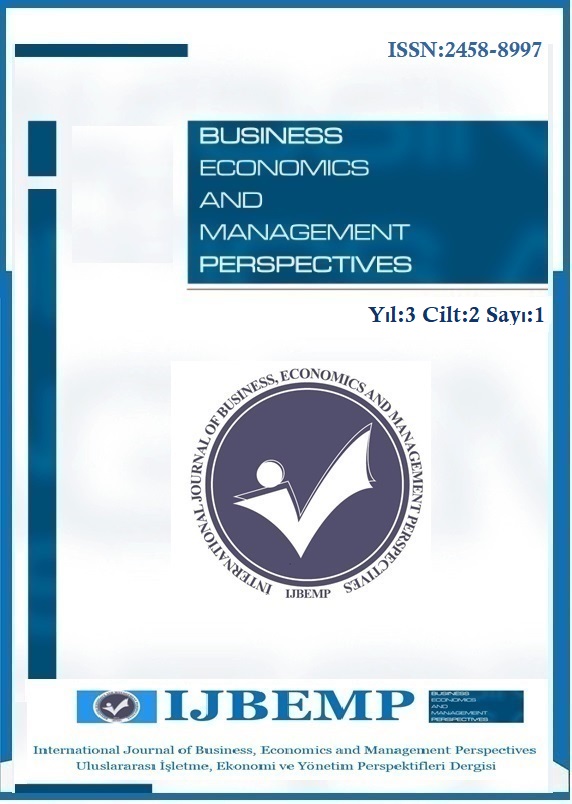BİLİŞİM TEKNOLOJİLERİ PROJELERİNİN BAŞARIMINDA EKİPLERİN ROLÜNÜN İNSAN PERFORMANS TEKNOLOJİSİ KAPSAMINDA İNCELENMESİ
Author :
Abstract
İnsan performans teknolojisi (İPT), iş ortamında insan performansını sistematik bir süreç içerisinde geliştirmeyi amaçlayan, uygulayıcı ve profesyonellerin deneyimleri ve yansımaları sonucu geliştirilen bir alandır. İnsan performans teknolojileri, kurumlarda var olan performans problemlerini tespit eden, performans problemlerinin sebeplerini saptayıp buna yönelik çözümler geliştiren, çözümü kurumda uygulayıp getirdiği sonuçları ve tüm performans geliştirme süreçlerini değerlendiren uygulamalı bir bilim dalıdır. Bu çalışmada, bilişim teknolojileri sektöründe lider kurumsal bir şirketteki projelerin başarımında etkili olan faktörler insan performans teknolojisi süreçleri kapsamında ele alınmış, bilişim teknolojileri projelerinde yer alan performans problemlerinin saptanması, bu noktalara çözüm önerileri getirilmesi hedeflenmiştir. Bilişim teknolojileri projelerinin başarı/başarısızlığına etki eden faktörler iş süreci ve iş ekiplerinin etkisi şeklinde iki alt başlığa indirgenmiştir. Beklenen görevleri yerine getiremeyen ekip/ekiplerin belirlenmesi ve süreç eksikliklerinin saptanması gibi proje başarımını etkileyen iki faktör ortaya konmuş, bu sorunların giderilmesi noktasında İPT süreçleri uygulanarak geliştirilebilecek çözümler incelenmiştir.
Keywords
Abstract
Human performance technology (HPT) is a field of practice in which the experiences and reflections of practitioners and professionals aim at improving human performance in a systematic process in the business environment. Human performance technologies are an applied science that identifies performance problems that exist in organizations, identifies the causes of performance problems and develops solutions for them, evaluates the results of implementing the solution in the organization, and evaluates all performance improvement processes. In this study, the factors that are effective in the performance of the projects in the leading companies in the information technology sector were discussed in the process of human performance technology and it was aimed to determine the performance problems in the information technology projects and to propose solutions there. Factors affecting the success / failure of information technologies projects have been reduced to two sub-factors, namely the impact of work processes and work teams. Identifying the team / teams that cannot fulfill the expected tasks and determining the process deficiencies are two factors that affect the project performance and the solutions that can be developed by applying the HPT processes have been investigated.
Keywords
- Altaş, M.G., (2012). Ar-Ge Kaynaklı Savunma Projelerinin Proje Yaşam Döngüsü Süreçleri Üzerine Bir
- Altaş, M.G., (2012). Ar-Ge Kaynaklı Savunma Projelerinin Proje Yaşam Döngüsü Süreçleri Üzerine BirAraştırma. (Yayınlanmamış Yüksek Lisans Tezi). Kara Harp Okulu Savunma Bilimleri Enstitüsü Savunma Yönetimi Ana Bilim Dalı, Ankara.
- Benjamin, C.M. & Kirkey, D. (2005,April). Feasibility Analysis : An Instruction Implementation Reality Check. International Society for Performance Improvement. Vancouver.
- Chevalier, R. (2014). Improving Workplace Performance. Performance Improvement. 53(5).
- Çakır, H. (2013). İnsan Performans Teknolojilerinin Temelleri. K. Çağıltay & Y. Göktaş (Ed.), Öğretim Teknolojilerinin Temelleri: Teoriler, Araştırmalar, Eğilimler. (75-98). Ankara: Pegem Akademi.
- Çapan, O.M. (2007). İnsan Kaynakları Yönetiminde Performans Teknolojisi Modeli ve Makina MühendisliğiAlanında Bir Uygulama. (Yayınlanmış Yüksek Lisans Tezi). Yıldız Teknik Üniversitesi Sosyal Bilimler Enstitüsü İşletme Ana Bilim Dalı, İstanbul.
- Franklin, M. (2006). Performance Gap Analysis., ASTD Press.
- Geis, G. & Shrock, S. (1999). A compherensive Guide for Solving Performance Problemsin Organizations, H. D.Stolovitch and E. J. Keeps (Eds.), Handbook of Human Performance Technology. (pp.191). San Francisco: JosseyBass/Pfeiffer.
- Gürol, Y. & Çapan, O.M. (2010). Örgütsel Performansın Yükseltilmesinde İnsan Performans Teknolojisi Modeli. Yönetim Bilimleri Dergisi. 8(1).
- Gürsoy, M. (2003). Çalışan Performansı Geliştirilmesinde Performans Teknolojisi Modeli ve PerformansTeknolojisi Durum ve Tutum Araştırması. (Yayınlanmamış Yüksek Lisans Tezi). Marmara Üniversitesi Sosyal Bilimler Enstitüsü, İstanbul.
- Hayes, R., Godwin, C., Butts, D. & Martin, F. (2015). The Hpt Model Applied To A Boutiquestyle Online Retail Store. Performance Improvement. 54(7).
- Hwan, Y.J. (2009). Performance, Performance System, and High Performance System. Performance Improvement. 48(3): 16–20.
- International Institute of Business Analysis. (2009). Guide to the Business Analysis Body of Knowledge® (BABOK® Guide) v2. ABD: IIBA.
- Keeps, E.J., Stolovitch, H.D. (2006). Fundamentals of Performance Technology (3). San Francisco:ISPI.
- Keeps, E.J., Stolovitch, H. & Pershing, J.J. (2006). Handbook of Human Performance Technology. San Francisco: ISPI.
- Klein, J.D. & Fox, E.J. (2004). Performance improvement competencies for instructional technologists. TechTrends. 48(2): 22-25.
- Molenda, M. & Pershing, J. A. (2004). The strategic impact model: An integrative approach to performance improvement and instructional systems design. TechTrends, 48(2), 26-32.
- O’Driscoll, T. (2015). Chronicling The Emergence Of Human Performance Technology. Performance Improvement. 54(6).
- Pekşen, M., Karakuş, T. & Göktaş, Y. (2016). İnsan Performans Teknolojisi Uygulamalarındaki Teknolojik Müdahaleler. Anadolu Üniversitesi Sosyal Bilimler Dergisi, 15(1),1-15.
- Philips, J.J. (1997). Proven Models and Methods for Evaluation any HRD Models. Handbook of Training Evaluation and Measurement Methods. (36). New York: Routledge.
- Project Management Institute. (2013). A Guide to the Project Management Body of Knowledge ( PMBOK® Guide ) v5. USA: ANSI.
- Rossett, A. (1999). Analysis for Human Performance Technology, San Francisco : Josey-Bass.
- Schwen, T.M., Kalman, H.K., Hara, N. & Kisling, E.L.(1988). Potential knowledge management contributions to human performance technology. Educational Technology, Research and Development, 46(4), 73.
- Van Tiem, D.M., Moseley, J.L. & Dessinger, J.C. (2000). Fundamentals of performance technology: A guide to improving people, process, and performance. Washington: Intl Society for Performance.
- Wells, N.L., Stanley, A. & Martin, F. (2014). The Human Performance Technology Model Applied To A University Library’s Work Efficiency. Performance Improvement. 53(3).





